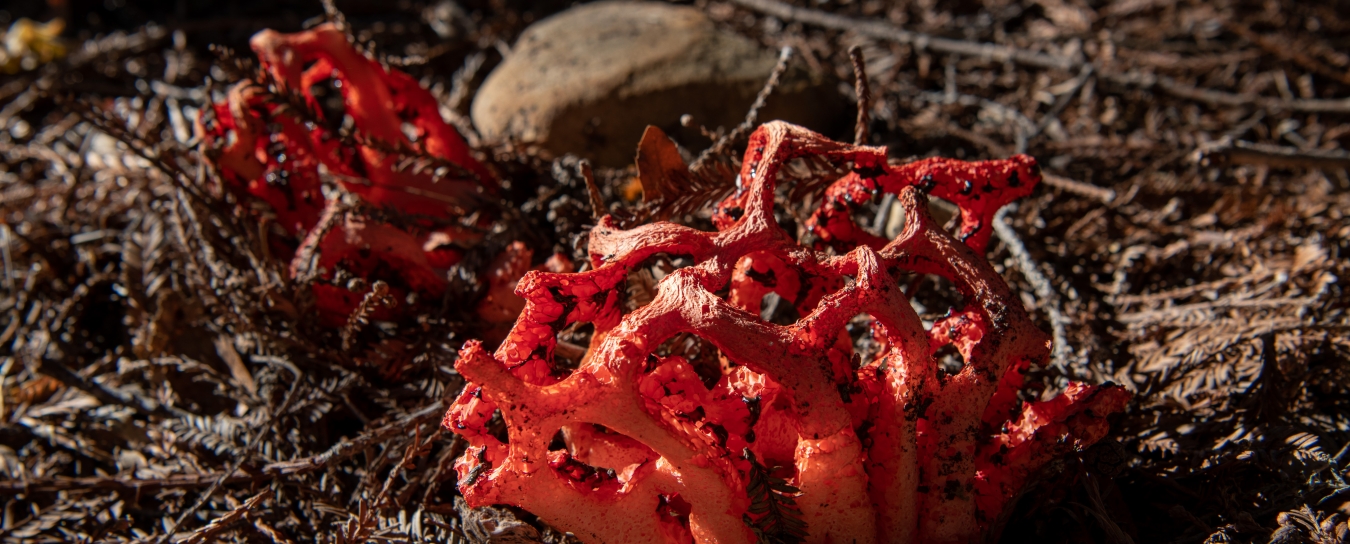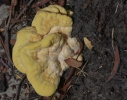
Fungi
Our fungi identifications are courtesy of fungi expert Bob Cummings, who teaches in the Botany Department at Santa Barbara City College in the Biological Sciences. Before you ask, check to see if your fungus has been identified below.
- Anthropology
- Rocks & Fossils
- Invertebrates
- Vertebrates
- Botany
- Astronomy
- Fungi
- General
- Recently Asked
Mushroom ID help request: Chicken of the Woods?
Hello,
I wonder if someone at SBMNH can help me identify this mushroom. It's growing on the base of a palm tree here in Santa Barbara.
An online forum suggested a species of Laetiporus. Chicken of the woods?
Photo attached.
Thanks!
Daryl

Curator Response
Hi Daryl,
Thank you for asking us about this fungus! Whenever we have a question that requires a fungi expert, we ask Bob Cummings, Ph.D., who teaches in the Botany Department at Santa Barbara City College in the Biological Sciences. Here's what he had to say:
“This is Laetiporus gilbertsonii, a common, widespread and showy shelf or bracket fungus. It has alternating bands of bright orange and yellow on top and a bright sulfur yellow lower pore surface. Its common names are 'sulfur shelf' and 'chicken of the woods' (but edibility is questionable, more below).
It is a heart rot fungus, decomposing the non-living heartwood at the center of the infected tree. It is most commonly seen on Eucalyptus trees and dead stumps in Southern California, but can also be found on other hardwoods such as carob, Grevillea, live oak, and even palms. The fruiting bodies appear in late summer and early fall, August through November, not needing any rain beforehand, unlike most Southern California fungi that fruit in response to rain events. Sulfur shelf fungus gains access to the heartwood through wounds such as broken branches that expose heartwood to fungal spores. With the heartwood rotted away, the tree is structurally weakened and subject to falling, or having its larger branches fall off. Trees that look otherwise sound and healthy can fall suddenly, often to everyone's surprise. Once the tree has fallen and died, the fungus will appear each autumn for several more years as it finishes decomposing the stump.
Most mushroom field guides list it as a safe, good edible, but in Southern California edibility is questionable. Informal polls among members of the Los Angeles Mycological Society show that some people can and do eat it regularly without problems, while other people experience unpleasant gastrointestinal distress. I recommend caution, but for those who wish to risk it, these are recommendations most often suggested: Harvest only the freshest edge portions, cook it well, eat sparingly at first and watch for symptoms, don't mix different species of mushrooms together in the same dish, and don't offer it to anyone else (even the slightest doubt can lead to unpleasant psychosomatic responses in some people).There is a similar species, Laetiporus conifericola, that occurs on conifers.”


